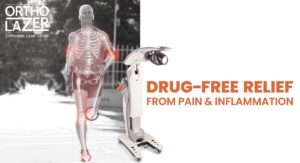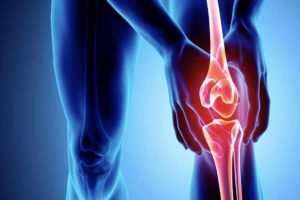
Complete Guide to Low Level Laser Therapy (LLLT) 2021
What is low-level light therapy? How does it work? Is it beneficial? How much does it cost? Here is everything you need to know about LLLT!
Tendons are soft tissue structures that connect muscles to bone. The primary function of tendons is the transmission of muscle contraction forces to the skeleton, leading to optimal movement of the body part. Tendonitis is a common inflammatory condition that causes swelling, discomfort, and pain in tendons.
Common treatment options for Tendonitis are activity modification, rest, pain-relieving medications, ice and heat therapy, physical therapy, stretching exercises, etc. However, pain-relieving medications, such as NSAIDs, can lead to stomach ulcers, diarrhea, headaches, dizziness, drowsiness, and allergic reactions.
Tendons damaged result from trauma, swelling, and inflammation. Research shows that cold laser therapy has positive effects on swelling, edema, and inflammation in tendons. It involves deep photons penetration to activate a biochemical cascade of events, leading to cellular normalization, regeneration, and healing.
Cold laser therapy has excellent anti-inflammatory and anti-edema effects, leading to increased vasodilation. It activates the natural lymphatic drainage system that drains inflamed areas in the damaged tendon. As a result, you have reduced inflammation, bruising, and edema.
Discomfort and pain resulting from Tendonitis can affect your day-to-day life. Cold laser therapy has beneficial effects on your nerve cells, blocking pain receptors or cells in the brain. The purpose is to decrease nerve sensitivity, leading to reduce pain and discomfort.
Low-level light or photons from lasers penetrate tissues and trigger cellular reproduction mechanisms. The laser light triggers your cell’s mitochondria to speed up energy (ATP) production and remove waste products. Increased exposure to laser light improves cellular repair processes, leading to faster healing and recovery.
Stable or increased metabolic processes at the cellular level lead to increased blood flow to the affected area. Laser therapy increases blood circulation, allowing capillaries to carry more oxygen and nutrients to the damaged tendons.
During the treatment, the patient does not feel any sensation, meaning cold laser therapy is an effective and painless treatment for Tendonitis. The treatment takes around 10-15 minutes, depending on the intensity of your Tendonitis. Research shows that people with Tendonitis receive treatment sessions 2-3 times a week.
How many treatments does it take for Tendonitis?
Although the number of sessions depends on the condition’s severity, the typical cold laser therapy protocol for Tendonitis is 7 to 14 visits. If you have severe symptoms, such as inflammation or chronic pain, you may undergo ongoing periodic treatments to control pain. It is wise to consult your doctor before undergoing cold laser therapy.
Most people with Tendonitis feel improvement or pain reduction after 1-3 treatments. However, if you have chronic pain resulting from Tendonitis, it will take 7-8 visits to reap the full benefits of cold laser therapy.
Final Words
Cold laser therapy does not mask or cover up your painful condition. In fact, it triggers your body’s natural healing mechanism to reduce pain, repair damaged cells, and heal tissues. Therefore, the results are quite long-lasting. Lastly, cold laser therapy is more effective than medications because it does cause side effects.

What is low-level light therapy? How does it work? Is it beneficial? How much does it cost? Here is everything you need to know about LLLT!

Laser therapy uses low-intensity light or waves to stimulate healing in cells and tissues. The therapy is also known as cold laser therapy because it
